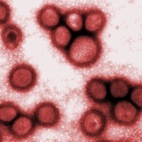Newsletter: Volume 4, Issue 3 November 2000
Streptococcal Toxic Shock Syndrome (STSS) *There is a PowerPoint presentation in the VetsOnly Section that contains more pictures and information for veterinarians. While the vast majority of the episodes of Familial Shar-Pei Fever (FSF) seen in Shar-Pei run a fairly benign course there are occasional exceptions which can have live-threatening consequences. Over the last few years Streptococcal Toxic Shock Syndrome (STSS) has been seen more frequently as a complication of FSF in the Chinese Shar-Pei. STSS involves infection with a group G streptococcus called Streptococcus canis. In the Shar-Pei cases I’ve seen this streptococcal infection is a rapidly progressing, highly...





